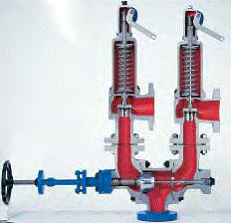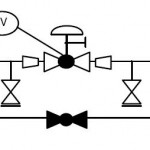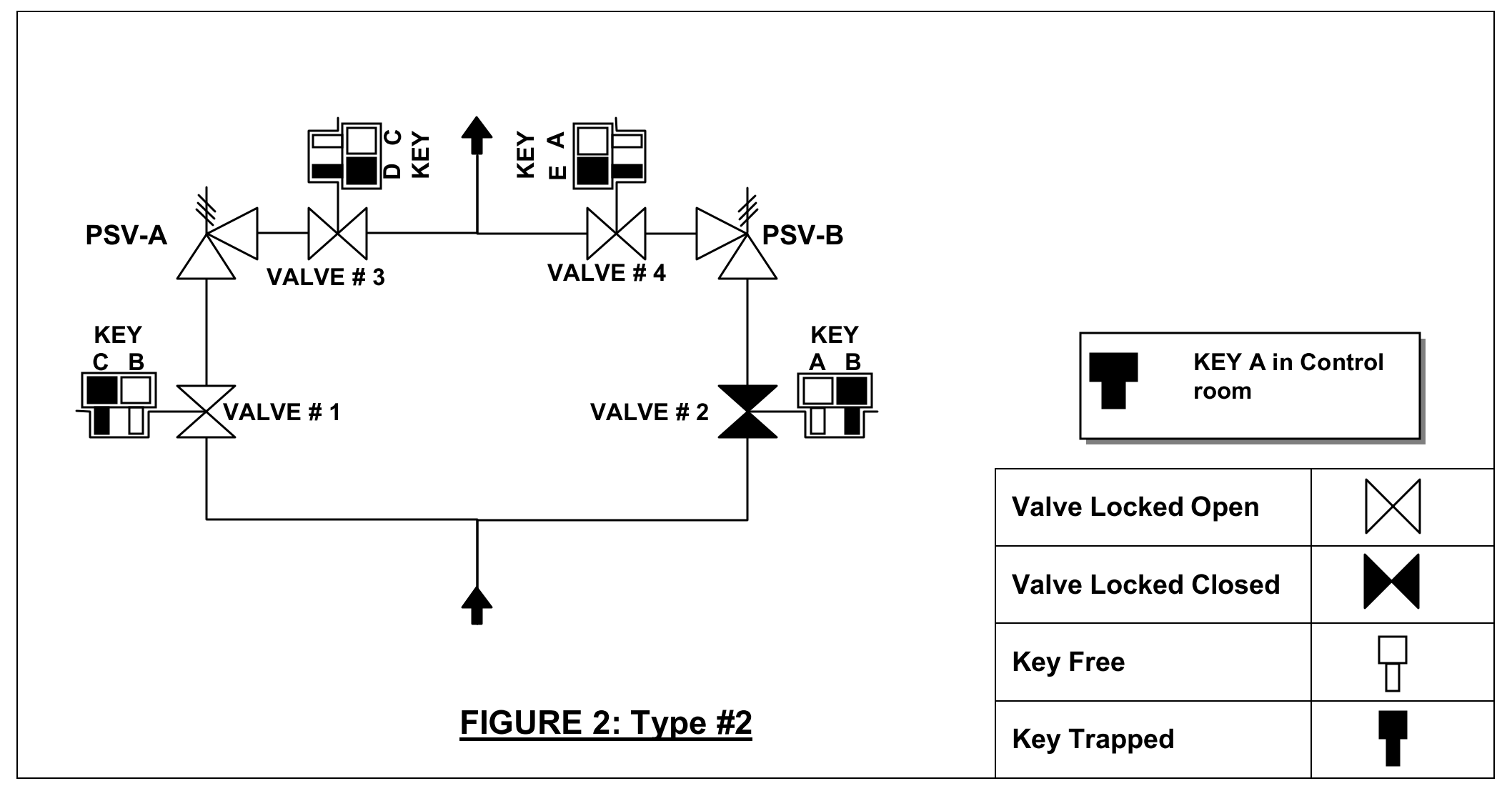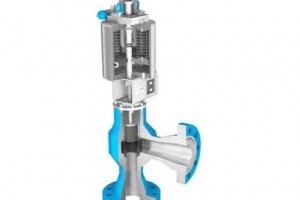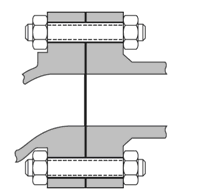Change-over valves are used to connect two safety valves to a pipe system with the use of only one pipe joint. This allows one safety valve to be in operation, while other is on standby (redundant). The stand-by valve can be removed for maintenance reasons while in operation, while the entire pressure system is kept protected from overpressure.
Change-over valves are recommended to be used in applications where:
- Shutting down of a plant or a process is either not possible or very costly,
- Shutting down of a plant or a process is highly undesirable due to the very big technical effort associated with this stopping down. For example, shutting down an ethylene plant or oil field can cause operating mediums to harden, solidify or even rendered useless.
Movement of a change-over valve is carried out with a handwheel. When a change over valve is delivered, the handwheel side (change-over valve side that faces the handwheel) is usually closed. From the outside, the valve's disc position can be acknowledged by the position indicating device.
Important points to be considered when using change-over valves are the following:
- Before the removal of a safety valve, we have to make sure that the respective side of the change-over valve is completely closed.
- Before the removal of a safety valve, the shut-off side of the change-over valve will have to vented (depressurised). Therefore, a drain hole of a stop valve is highly recommended in order to carry out this depressurisation.
- Safety valve inlet pressure loss will have to be kept lower than 3% of the set pressure. This can be achieved either by minimizing the use of elbows at the safety valve inlet, ensuring the shortest possible inlet line to the safety valve or increasing the inlet line cross-section.
- If still however the 3% criterion can't be met, then the designer should consider increasing the diameter of the changeover valve and installing reducers at the inlet of the safety valves.
